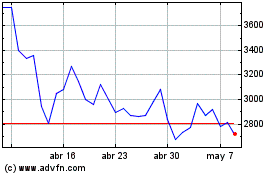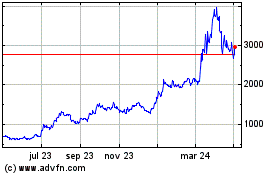Web3 Liberation from Postmodernism’s Stranglehold: The Art
Renaissance By VESA Postmodernism isn’t just an art issue—it’s
everywhere. This single, pervasive philosophy has seeped into big
tech, corporations, legislation, media, and nearly every major
institution, often strangling genuine creativity, diversity of
thought, and depth. For comparison, there are around 200 other
philosophies, 4,300 religions, the male perspective, homemaker
moms, the working class, the diminishing middle class, the
scientific paradigm, and much more that are left out of gallery
circles simply because they don’t fit the dominant narrative, which
paradoxically claims to be the one that’s repressed. It’s really a
luxury belief for the modern aristocracy—a tool for control—and the
Marxist roots always emerge when pressure is applied.
Postmodernism’s defining trait is deconstruction, pulling apart
concepts and ideals without ever offering a cohesive path forward.
It’s a circular maze that keeps doubling back on itself, producing
increasingly bizarre conclusions to solve the very problems it
creates. Real solutions lie in expanding the field of view beyond
this single frame, embracing a diversity of philosophies,
religions, and perspectives that have grounded humanity for
millennia. The real power of Web3 lies in its ability to do just
that: to break art and culture out of this one-note narrative,
empowering creators and thinkers alike to explore beyond the limits
imposed by postmodernism. This is what we missed in the first run
of NFT’s importing the same postmodern experts from the realm we
were trying to break free from. That and some better tech solutions
for sustainable art, as some of the falling platforms have showed.
We first had a true avant-garde scene, which was then quickly
eroded by the millions upon millions showered on end-stage
postmodern expressions, championed by people who either (a) didn’t
realize how tired it all was or (b) were heavily financially and
ideologically incentivized to support it. Funny, not funny It turns
out that holding contempt for ideas and their significance means
that, time and again, the working class ends up being ruled by
them. While I understand why this is amusing to some, I see how
many are now disillusioned, as the humanities have been overtaken
by a single, monolithic ideology. Similarly, the U.S.
intelligentsia’s “flyover states” disdain is now facing a reckoning
with the MAGA hat in a very different way after 40 years of
indulging in postmodern ideas and scorn. The underbelly of the
speech in A Bug’s Life is surfacing, too. You can’t only summarise
postmodernism to be woke and Marxist, but you aren’t far off. In
case you want to hear the foundations, Steven Hicks has a brilliant
analysis and summary of it. You might have to spend 3hrs to save
your life & community to get it, so it’s not that long, really
⚡️ Part I – Philosophy foundations Part II – Relevance now For five
long decades, postmodernism has held art in a chokehold, enforcing
its narrow, often cynical, view of reality. Art became a reflection
of society’s fragmentation, alienation, and obsession with
irony—what I call the “postmodern monolithic rule.” While
postmodernism initially sought to challenge established norms, it
has since become the new establishment, dictating an increasingly
restrictive narrative. The art world under postmodernism has
marginalised genuine exploration, profound beauty, and universal
human truths. This is where Web3 steps in, not just as a
technological shift but as a liberation front for artistic
expression. That was the point. Not just monetising what ever, but
to actually set culture free. Web3 allows artists to break out from
the centralised grip of traditional galleries and critics,
unleashing a decentralized platform where new ideas can flourish –
however this means the scene has to support that, instead of the
next duck tape banana or drooling ape AI pic. Through NFTs and
blockchain, creators can finally bypass the gatekeepers, reaching
audiences directly and letting their art speak unfiltered. It’s the
anti-postmodern era we’ve been waiting for—one that values
authenticity, courage, and depth over calculated irony and shallow
critique. The freedom to explore and create in as vast a way as the
internet has already guided us to be for the past twenty years.
What is the Garden of Earthly Delights by Hieronymus Bosch.
From paradise to hell, the lesson path is clear in the end stage.
These aren’t just imaginative nightmares. They’re warnings about
human nature — and what a world without religion is like. Feel
familiar a bit? The twet link will explain it further. Outside the
restrictive frame of postmodernism lies a rich expanse of artistic
traditions and narratives that we’ve been missing out on. Imagine a
return to the timeless pursuits of beauty, harmony, and
spirituality, merged with the advancements of digital technology.
Art that celebrates connection, transcendence, and human potential.
Web3 offers the tools to bring these visions to life, and artists
are now free to explore themes of mythology, futurism, abstraction,
and even divinity—all without needing to conform to a single
ideology. This isn’t just art for art’s sake; it’s art for
humanity’s sake, and it’s been a long time coming. Authenticity as
an Artist: From Cave Paintings to the Metaverse Art isn’t a recent
trend—it’s a core aspect of the human journey that dates back to
our ancestors painting on cave walls. In today’s world, however,
many artists find themselves constrained by expectations to follow
specific trends, often losing their authenticity along the way.
True artistry isn’t about following popular movements or creating
what’s fashionable. It’s about tapping into a lineage of creativity
that spans thousands of years, one that includes everything from
the first tribal carvings to the masterworks of the Renaissance,
all the way to the digital landscapes of the metaverse. Why did
Graham Hancock’s Ancient Apocalypse suddenly get attacked as
racist, with Hancock himself labeled a white supremacist, despite
his thirty-year marriage to a woman of color and his long-standing
praise of ancient cultures worldwide throughout his journalistic
career? You guessed it—postmodernism, as the series collapses the
narrative. I’ll write more on that later. Inside the art world, for
the most part, you might hear of Mayan culture and traditions, but
not the parts that contradict postmodern ideas. Being an authentic
artist means immersing yourself in this vast ocean of history and
expression, drawing inspiration from the past and future alike. The
beauty of Web3 is that it allows artists to travel across these
realms without restriction. The blockchain and NFTs don’t just
democratize art; they create a space where we can explore new forms
of expression while staying grounded in the wisdom of our creative
ancestors. The metaverse, for instance, offers the opportunity to
merge the digital with the timeless, creating interactive
experiences that honor the depth and spirituality of older art
forms while pushing the boundaries of what’s possible. When you
explore the richness of art history, you find yourself standing on
the shoulders of giants. Authentic art doesn’t mimic or simply
react—it builds bridges. It’s about discovering your voice in this
vast chorus and using every tool available, whether it’s oil on
canvas, sculpture, or VR. Web3 and the metaverse make this journey
even more exhilarating, providing artists with a canvas as
expansive as their imaginations. True artists dig deep, break
molds, and remind us that art is not bound by time or technology
but by a timeless quest for truth. Imagine the uproar, the
fuss and emotional outbursts if there was to be a grand unveiling
of an openly conservative gallery? The Heretical Idea: Curate Your
Own Galleries Outside the Establishment Here’s a heretical idea for
cultural curators and artists: Forget trying to break into the art
world if you don’t feel represented. Start your own galleries,
curate your own shows, and let Web3 be your platform for sharing
art on your own terms. It’s cheap to start an online gallery. Web3
has made this entirely possible. With decentralized platforms,
artists can sidestep traditional gatekeepers, reach global
audiences, and create communities that appreciate and support their
work. Curating your own gallery isn’t just an act of defiance; it’s
a celebration of creative freedom. Imagine artists coming together
to form collectives that highlight unique styles, new voices, and
daring themes that the conventional art world might consider “too
much.” With NFTs and blockchain, you have the tools to bring these
exhibitions to life without relying on anyone else’s approval.
Curating your own gallery in the Web3 space doesn’t just disrupt
the old system; it builds a new one based on collaboration,
innovation, and authenticity. This is where real artistic diversity
can thrive, unbound by the constraints of a single ideology.
Artists can create galleries that reflect their own vision, themes,
and messages—whether that’s surrealism, futurism, spiritual
exploration, or socio-political commentary. The freedom to shape
your own narrative is the most powerful tool artists have, and Web3
is the key to unlocking it. It’s time to stop waiting for
permission and start creating spaces that embody the true spirit of
art: raw, fearless, and unfiltered. TDR Notice that all these
artists and collectors below are doing this poll by not making
their views public. I’ve been standing up for this, in the free
speech spirit, since I came in from 2017, and was put in the web3
Western culture jail for it (mostly) since. Here is an earlier
article to prove it. 7-years ago so, have your postmodernism, it’s
fine, I’m not trying to take your voice away from you, but actually
deliver on the inclusion promise so everyone can come to play. The
virtual is for everyone, not just one dominant ideology that leaves
out most of the world. As for the cover image, I have my
reservations about Trump, even if there’s a potential Web3
landslide against the pro-censorship camp led by figures like
Kamala. My concerns are less pronounced with Elon Musk, Ron Paul,
RFK, Tulsi Gabbard, and increasingly JD Vance after listening to
him on Rogan. While most visual artists sat this one out—even in
Web3—the comedians have shifted the landscape, outpacing us 6-0 in
terms of relevance. The thing is, even if Trump is guilty of a lot,
he and his team of “X-men mutants” have become voices for Bitcoin,
free speech, opposition to big pharma, and perhaps even
psychedelics, squirrels, and the like. For the first time in my
life, a political campaign is actually addressing ideas that
interest me. Of course, as I am not a US citizen, you don’t have to
worry about my vote even if you absolutely hate everything I just
wrote. None the less, this election will greatly influence my life,
and it is addressed in the web3 citizen of the world spirit. Let
that sink in, VESA Crypto Artist, Speaker, Consultant, Writer All
links to physical, NFTs, and more below http://linktr.ee/ArtByVesa
Maker (COIN:MKRUSD)
Gráfica de Acción Histórica
De Oct 2024 a Nov 2024

Maker (COIN:MKRUSD)
Gráfica de Acción Histórica
De Nov 2023 a Nov 2024
